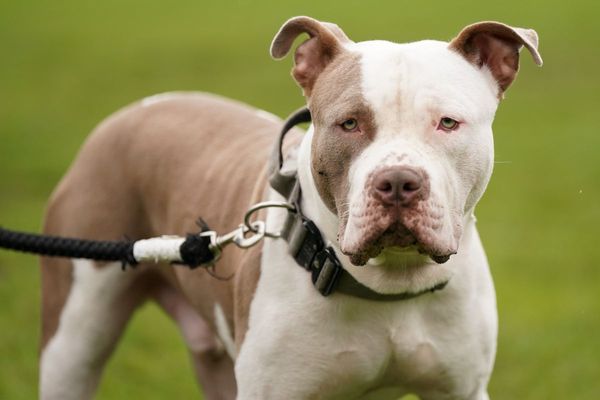Money can't buy you happiness is an adage that is true for almost everything in life. Except perhaps healthcare.
Because, unfortunately, nature does not cure disease, even though the words of French philosopher and historian Voltaire would have you believe otherwise: “The art of medicine consists of amusing the patient while nature cures the disease," Voltaire had once famously said.
Turns out this 'art' will cost you. A lot. And if Voltaire lived to see this day, he'd tend to agree.
TheStreet has compiled a list of some of the most expensive drug treatments in the world that cure diseases ranging from progeria, when infants start to look elderly to spinal muscular atrophy, neuroblastoma and a rare blood disorder.
Each treatment includes details like cost, patents expiration, sales figures and future outlook.
Zolgensma
Swiss pharmaceutical giant Novartis (NVSEF) apparently sells the most expensive drug in the world that costs $2.1 million. It is a one time shot that cures spinal muscular atrophy in infants by injecting a new DNA to correct the faulty gene.
Spinal muscular atrophy is a rare, genetic neuromuscular disease resulting in the progressive and irreversible loss of motor neurons, which causes muscle weakness and atrophy.
Zolgensma reported a 46% rise in sales to $1.35 billion.
Novartis is in its third year in the marketplace with Zolgensma and has treated 1,800 babies, Novartis Chief Executive Vas Narsimhan said in the company's latest earnings call in February.

Zolgensma is clubbed under what the company describes as its "innovative medicines" category.
Sales from the overall innovative medicines unit including Zolgensma and other vital drugs like Entresto, Cosentyx clocked $42 billion in overall sales last year, which represented 81.3% of the group’s net sales.
Zolgensma is approved for sale in over 40 countries including the US, the European Union to treat babies and young children.
"Following conditional approval of Zolgensma in Europe in 2020, Novartis Gene Therapies established early access agreements in multiple European countries. These agreements support early patient access by allowing a variety of customizable options, including retroactive rebates, deferred payments, installment options, outcome-based rebates, and collaborations with healthcare systems to optimize disease management," the company said.
Novartis said these efforts have expanded globally, and that the company now has multiple early access agreements and pay-for-performance agreements.
The market for spinal muscle atrophy cures has grown with relatively cheaper drugs like Biogen's (BIIB) SMA candidate Spinraza that costs $750,000 in the first year and subsequently drops to $375,000 a year thereafter, Reuters reported.
But there is no generic competition in the U.S or the EU.
Zokinvy
Eiger BioPharmaceutical's (EIGR) Zokinvy is the first drug to treat progeria, also known as Hutchinson-Gilford syndrome, or a group of separate and distinct ultra-rare, genetic, premature aging diseases that lead to death in young patients.
For a familiar pop culture reference, progeria is the disease that leading Hollywood actor Brad Pitt portrayed in fantasy romantic drama The Curious Case of Benjamin Button, also starring Cate Blanchett.
The Palo Alto, California-based company recorded net product sales of $3.4 million for Zokinvy in the fourth quarter 2021. The company commercially launched Zokinvy in the U.S in January, last year, and reported full year sales of a little over $12 million.

Zokinvy is a prescription drug that costs patients $717 per 50-mg capsule. Patients typically take around 200 mg of Zokinvy a day, and this adds up to $86,040 a month and over a $1 million a year.
Eiger BioPharma has patents protection for Zokinvy until at least 2024 and an application for patent term extension.
Eiger BioPharma's application for sale of Zokinvy in Europe is under review by the European Medicines Agency and a decision in expected in the first half of 2022.
Eiger BioPharma has also filed another patent application in the US related to method of treating progeria and progeroid laminopathies that if issued would provide further protection for Zokinvy until 2039.
Danyelza
Danyelza is a prescription drug for the treatment of pediatric and adult patients with high risk neuroblastoma, a rare type of cancer found in the bone or bone marrow.
Danyelza costs $20,368 per vial, and patients typically use around 48 vials per year, bringing the annual cost close to $977,664.
Manufactured by Y-mAbs Therapeutics (YMAB), the biotech giant that serves patients in U.S. and Denmark, Danyelza generated $32.8 million in sales for the year ended December 31, 2021, according to its 10-K filing. There were no product sales for 2020 and 2019.
The drug is administered in combination with another medicine Granulocyte-Macrophage Colony-Stimulating Factor, or GM-CSF, given to pediatric and adult patients with high-risk neuroblastoma, in the bone or bone marrow.
Danyelza was approved by the United States Food and Drug Administration in November 2020. The company, that develops treatments for cancer patients of all age groups, began commercializing Danyelza in the United States and began shipping it in February 2021.
The biotech giant has global Danyelza patents in the U.S. and several other countries including China and India till June, 2031. The company said an application for patent term extension was filed last year for its core U.S. patent, and if granted it is expected that it will extend the term until February 4, 2034.
Soliris
U.K. pharmaceutical giant Astrazeneca's (AZN) treatment for a rare blood disorder called Soliris is also considered to be among one of the most expensive drugs in the world.
Soliris has quickly become a money spinner to Astrazeneca's rare disease unit contributing over 60% to this segment's overall sales.
Astrazeneca has patents for Solaris till 2027 both in the U.S. and Europe. The biotech pharma giant clocked $1 billion in revenue from the sale of Soliris in the U.S. in 2021. Worldwide sales of Solaris clocked $1.87 billion in revenue last year.
Astrazeneca's sales in its rare disease medicines unit were in excess of $3 billion in 2021 post its acquisition of Boston-based Alexion Pharma that closed in July last year. Soliris contributed to 60% of the firms's total rare disease sales.
Luxturna
Luxturna is a medicine that is used to treat adults and children with loss of vision due to inherited retinal dystrophy, a rare genetic disorder of the retina.
Luxturna secured the FDA nod in December 2017 when it was under Spark Therapeutics (ONCE).
Luxturna launched in the U.S. with a sticker of $850,000 per patient, according to biotech news website Fierce Biotech.
In 2018, Novartis entered into an exclusive licensing and commercialization agreement and a supply agreement with Spark for Luxturna sales outside the United States. The agreements included regulatory and sales milestones as well as royalties payable to Spark on ex-US sales.
On December 17, 2019, Swiss research and healthcare major Roche acquired Spark.
Novartis has several patent license, supply and distribution agreements with Roche.
Roche does not currently break out Luxturna sales, but the therapy was estimated to be worth $326 million at the end of December 2020, according to trade publication Fierce Biotech.







